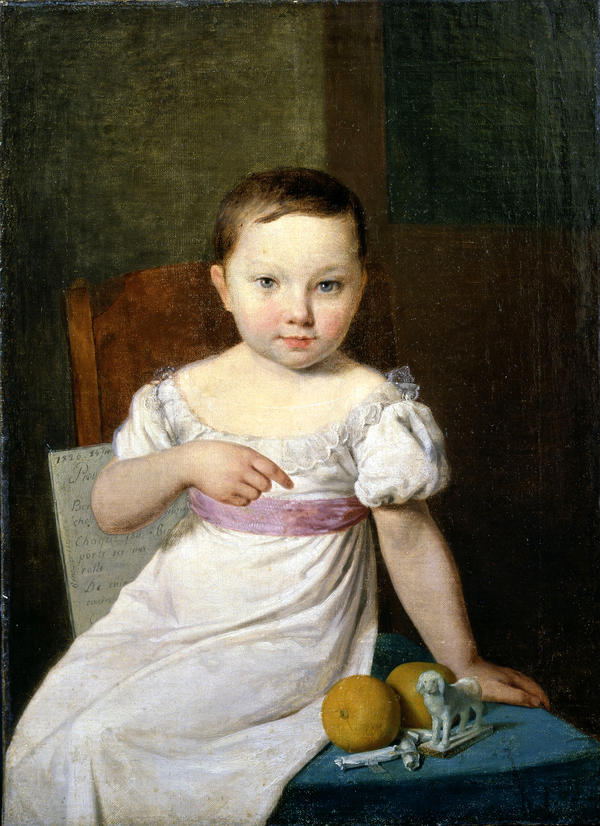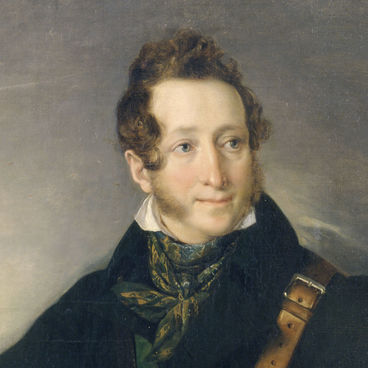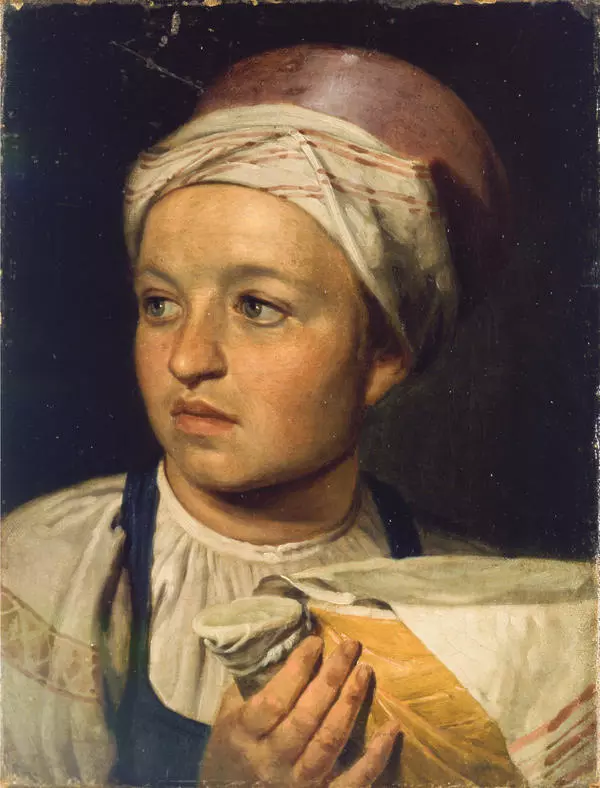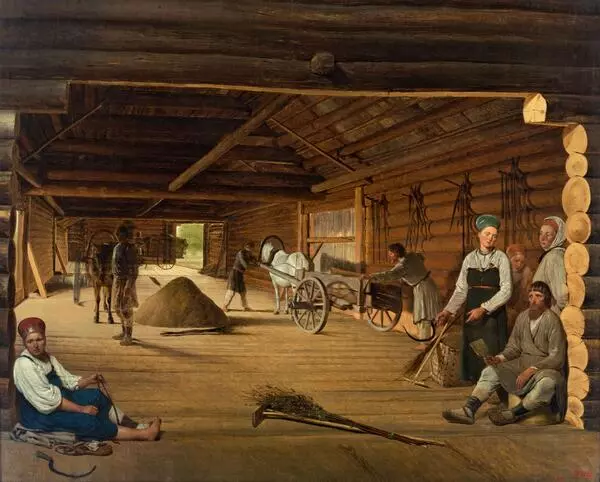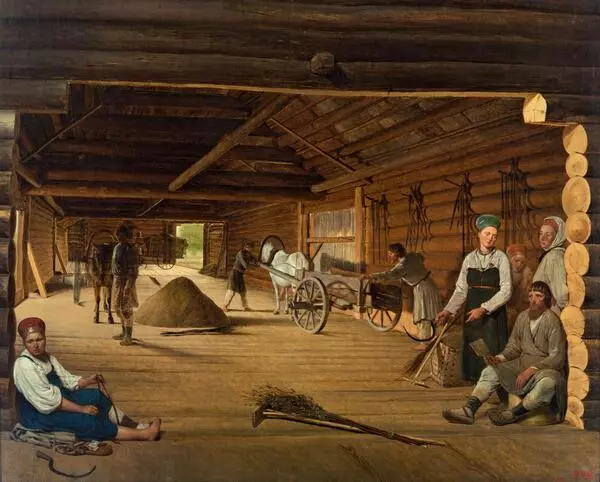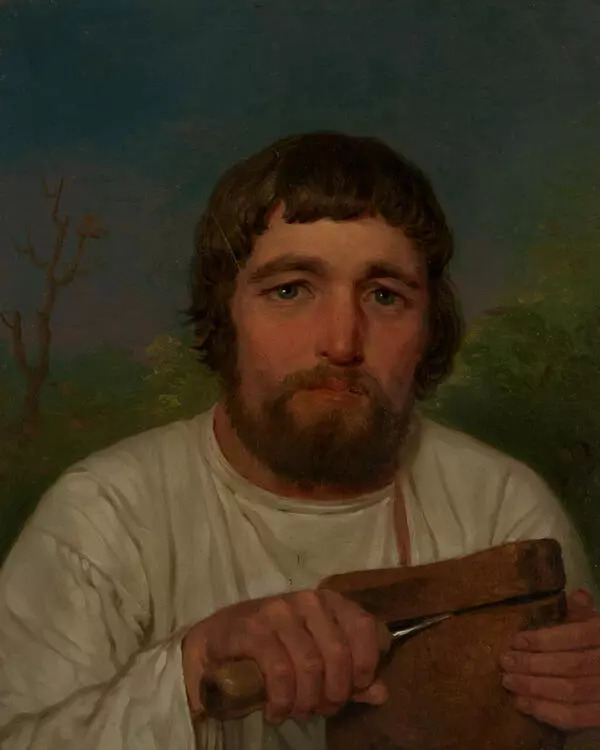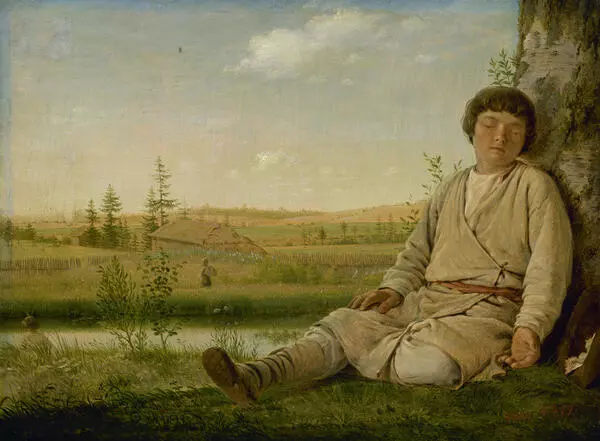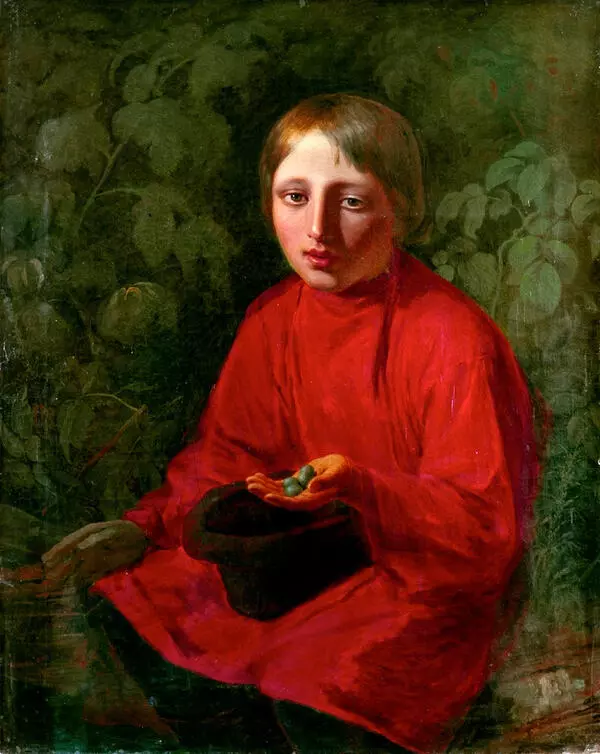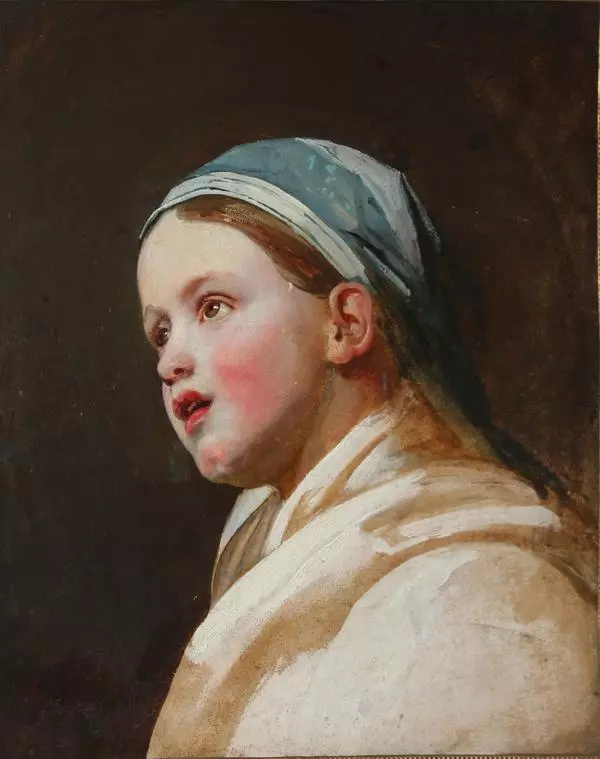Alexey Venetsianov is a master of portrait and genre scenes from peasant life. He was one of the first Russian artists who started to show people’s everyday life, domestic concerns and day to day work. Venetsianov wished to show man as he was in real life. The master believed that, in daily environment, the human character was revealed in a natural and faithful way. He painted peasant women at work, girls at the time of divination, showed country landscapes.
Venetsianov retired from service in Saint Petersburg and settled down in his estate of Safonkovo in the Tver Province. For many years, he taught young artists: first he searched for talents, then they seeked themselves to become his students. He spent money from selling paintings on training artists many of which came from peasant families. He taught them to show life in its various manifestations on their paintings, without pressing upon them his academic art canons. His students and followers were called “Venetsianov school”, they mainly created genre paintings. Venetsianov’s views had a considerable impact on a whole generation of Russian artists.
The exhibition features the Portrait of Nastenka Khavskaya. Children’s portraits presented the only possibility to show stages of a child’s growth. The artist’s contemporaries admired the unfeigned naturalness which marked his portraits. Irrespective of the characters’ social category, Venetsianov’s child portraits call for our sympathy and attention.
Venetsianov possessed an important for any creator quality: he could put himself in the other person’s position, feel that person’s emotions like his own ones. The artist portrayed the image of Nastenka Khavskaya with great warmth. He skillfully captured the child’s naïve and pure identity: the observant and serious look, ingenuous and affectionate expression. The details create a moving image of childhood, dewy eyed and open to the world: short hair, folds of the dress, sweets in wraps, oranges, objects on the chair – probably, the girl’s favorite toys.
The interior is slightly outlined on the painting: hardly visible is the opened notebook with a French text behind the child and the books in the cabinet. The objects evoke associations with serious learning efforts. The girl is shown in a natural position, the artist managed to avoid excessive sentimentality peculiar to child portraits and created one of the best examples in this genre.
Venetsianov retired from service in Saint Petersburg and settled down in his estate of Safonkovo in the Tver Province. For many years, he taught young artists: first he searched for talents, then they seeked themselves to become his students. He spent money from selling paintings on training artists many of which came from peasant families. He taught them to show life in its various manifestations on their paintings, without pressing upon them his academic art canons. His students and followers were called “Venetsianov school”, they mainly created genre paintings. Venetsianov’s views had a considerable impact on a whole generation of Russian artists.
The exhibition features the Portrait of Nastenka Khavskaya. Children’s portraits presented the only possibility to show stages of a child’s growth. The artist’s contemporaries admired the unfeigned naturalness which marked his portraits. Irrespective of the characters’ social category, Venetsianov’s child portraits call for our sympathy and attention.
Venetsianov possessed an important for any creator quality: he could put himself in the other person’s position, feel that person’s emotions like his own ones. The artist portrayed the image of Nastenka Khavskaya with great warmth. He skillfully captured the child’s naïve and pure identity: the observant and serious look, ingenuous and affectionate expression. The details create a moving image of childhood, dewy eyed and open to the world: short hair, folds of the dress, sweets in wraps, oranges, objects on the chair – probably, the girl’s favorite toys.
The interior is slightly outlined on the painting: hardly visible is the opened notebook with a French text behind the child and the books in the cabinet. The objects evoke associations with serious learning efforts. The girl is shown in a natural position, the artist managed to avoid excessive sentimentality peculiar to child portraits and created one of the best examples in this genre.

